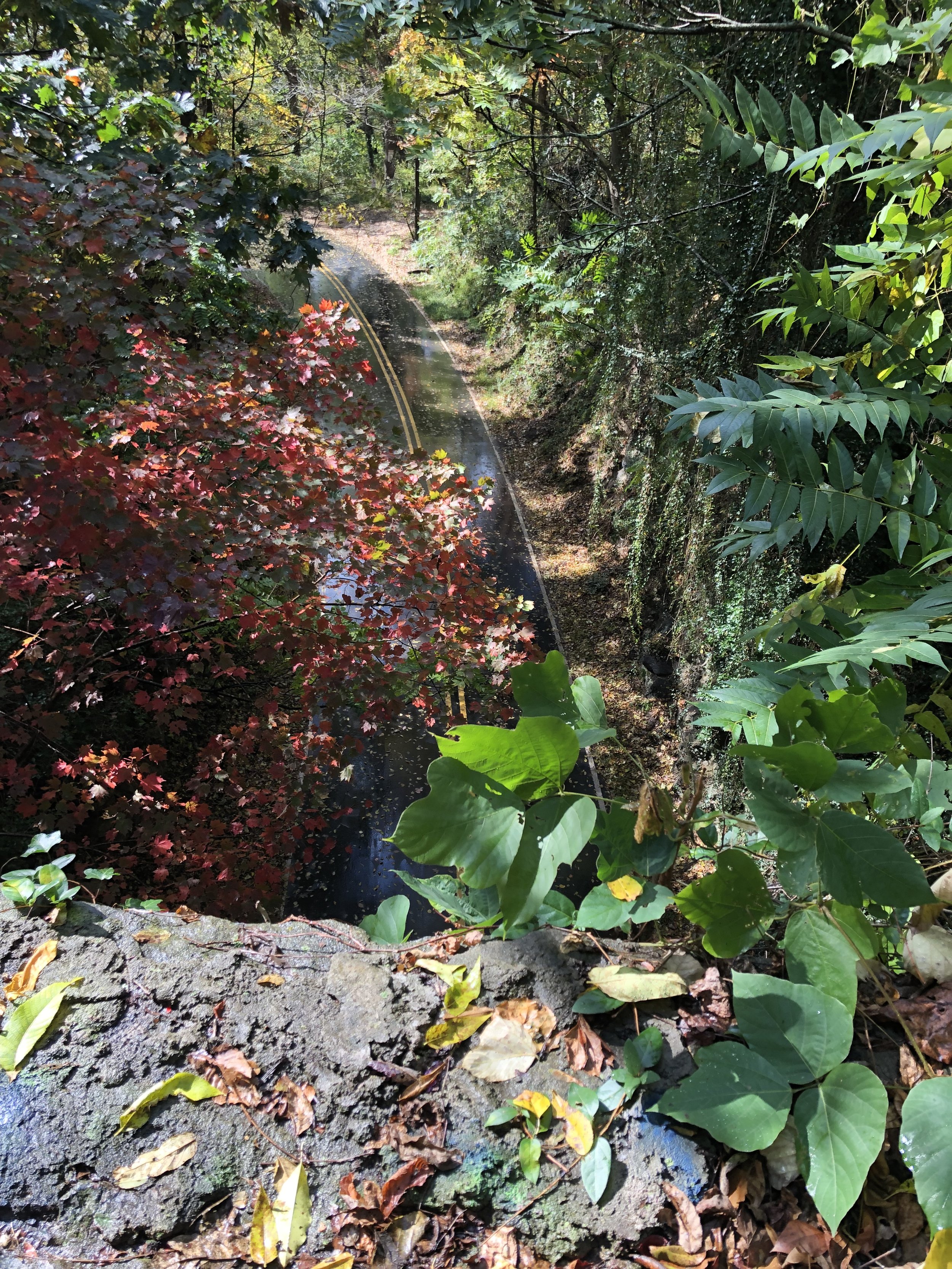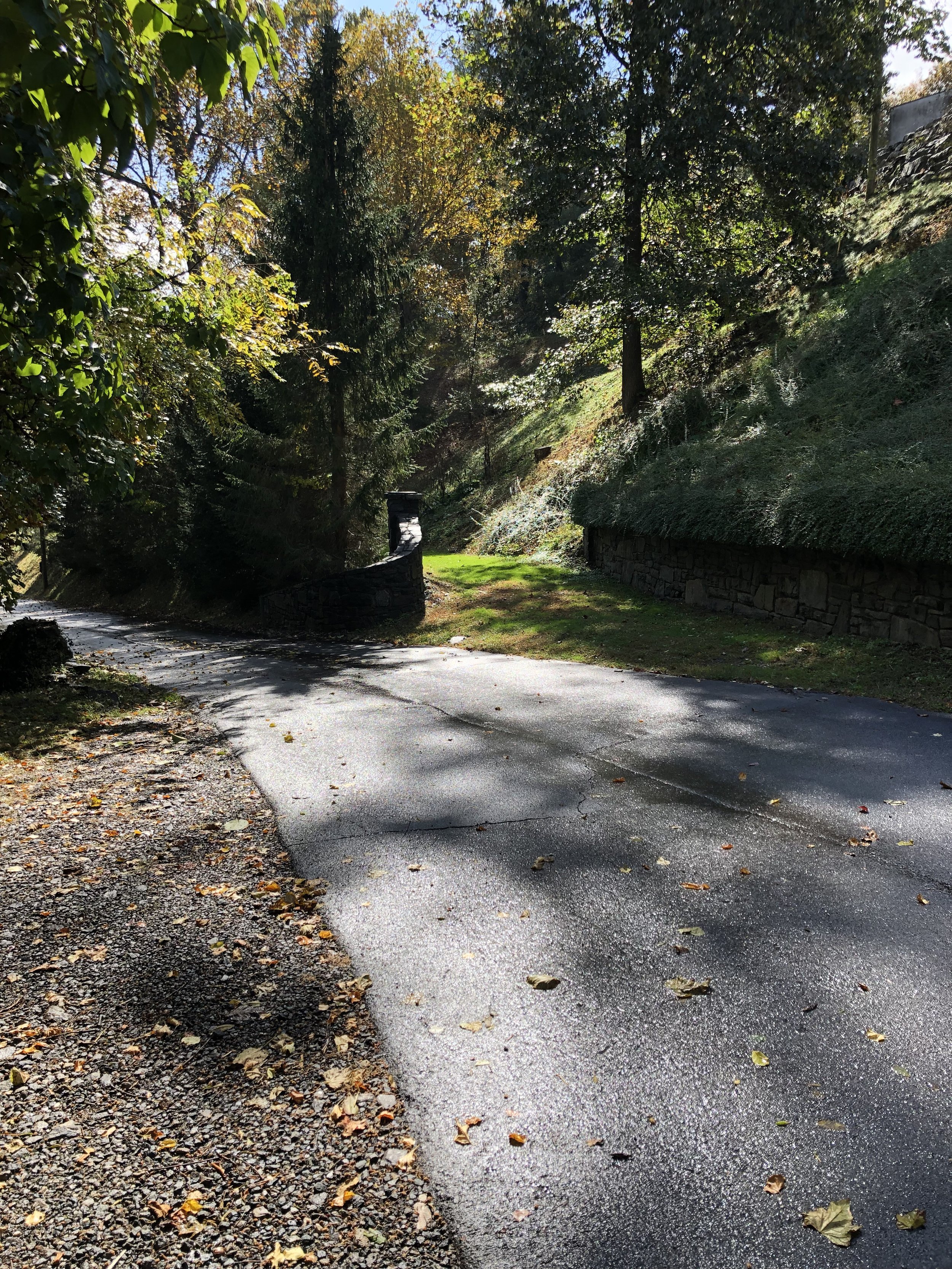Helen's Bridge
Major William J. Brown and his wife Ann Marshall Evans, from Lewiston, PA, had three sons. The one that interests us is John Evans Brown. At the ripe old age of 22, John Evans Brown became a Forty-Niner and headed to California to seek his fortune. Gold mining did not work out, so he found work as a surveyor. After a few years of surveying, he decided to head to Australia, where he became a sheep and cattle farmer in New South Wales. The government asked him to serve as US Consul, and he agreed. In 1859, he married wife number one, Theresa. He managed to accomplish all these things in the ten years since he left Lewiston, PA.
A bit later he eyed greener pastures in New Zealand. He bought a farm near Christchurch, which he named Swannanoa, helped build a Methodist church there (also named Swannanoa), and then moved again. At this juncture, he began to move away from farming. He became the general manager of the Christchurch Tramway Board and began a career in politics. Unbelievably, at least to me, this American Yankee who moved to New Zealand by way of Australia somehow managed to be elected to the New Zealand parliament not once, not twice, but three times. Unfortunately, in 1880, his wife Theresa died at the age of 42.
Brown married wife number two, Jane Emily Martin, in late 1883, and in 1884 called it quits in New Zealand. That was the same year his father died, leaving him a large parcel of land, assumed to be worthless, in Asheville, NC. Brown discovered mica on the property and mined it. At the same time, he began to build his dream home, a castle, on the top of Beaucatcher Mountain. He named the castle Zealandia. The castle was completed in 1889, a bit before the Biltmore House, and Brown enjoyed it for a mere six years before passing away. Eventually, the house was acquired by Sir Philip S. Henry, an Australian, who doubled the size of the castle, work which was completed in 1908.
Sir Philip was apparently quite wealthy, as he owned another huge house but a short distance from Zealandia, named Beaumont. To facilitate travel between the two properties, he had the architect of the Biltmore House design and supervise the construction of a bridge between the two properties, which spanned the Beaucatcher Gap. (As you can see, there are quite a few “Beau” names in the area.) The bridge was constructed in 1909 and went by the official name of Zealandia Bridge.
Then something happened, and it became Helen’s bridge. And therein lies a tale.
What I am about to relate is all urban legend. There are several variations on the theme. None can be identified as the truth. There is a good bit of evidence that the name Helen was grafted onto this urban legend as the result of the death of a nineteen-year-old woman, named Helen Clevenger, who was murdered in room 224 of the Battery Park Hotel in Asheville, in 1936. Here is the first version of the story that I heard.
A young employee at Zealandia was going about her chores when she became aware that the library caught fire. Her child was in the library, but as the room was filled with all that flammable paper, she was unable to rescue her child. Despondent, she ran to the bridge and hanged herself from it.
The problems with this version are at least two-fold. The first problem is that there are no records of a fire at Zealandia. Once during a dinner party, a female guest moved too close to one of the fireplaces, and her dress caught fire. But the fire was quickly put out, and the young woman did not commit suicide. That event is the closest anyone can find of a fire at Zealandia. The second problem eliminates death by hanging, at least in my mind. I have walked across that bridge: there is nothing to which a rope can be attached.
Another version is similar, but it has the young lady brooding for weeks or months before throwing herself off the bridge. Death by falling from the bridge seems more likely. Unfortunately, nothing in the records of Zealandia backs this up.
Yet another version has the young lady pregnant, presumably by the master of the castle or one of his male relatives, unmarried, and unable to bear the shame.
Let’s just assume that someone did die, for whatever reason, on or near the bridge. We now get to the ghost tales.
Many people report seeing a wraith-like apparition on or near the bridge. Reports vary: there are reports that the apparition is crossing the bridge and other reports that the apparition is hanging from the bridge. Some even say the apparition waves them down and asks if they have seen her child. The part I find most interesting is the part that people claim happens during good weather or bad, during daytime or nighttime. I am talking about the wrath of Helen.
According to the stories, people who try to summon her to appear suffer from a variety of problems. They hear noises, of course, as one would expect from just about any ghost. But they also experience car troubles: cars that will not start, electronic door locks that cease to function, dead car batteries, and things of that nature. Some say their cell phone batteries drain almost instantly.
Kathy and I took the pictures on this post recently. Zealandia is privately owned, and very well marked with “no trespassing” signs, so the pictures of the mansion that you see were taken at a distance. The bridge has graffiti on it, a modern curse. You can see from the photos of the top that hanging oneself from this bridge would be problematic. The photos of the underside show that the bridge was well-designed and well-constructed.
We live on the southern slope of Beaucatcher Mountain, and Helen’s Bridge is less than two miles from our house. I asked Kathy if she would like to return to the bridge on Halloween night, to see what we could see. She mumbled something about being with granddaughter Emma that night, so, NO!
Oh, well. Maybe some other Halloween.
The bridge, viewed from the east, at a distance.
The underside of the north end of the bridge.
The bridge from the top.
The view from the top of the bridge to the east.
The view from the top of the bridge to the west.
Along this overgrown path, horse carts carried The Master of Beaumont and Zealandia back and forth between his mansions. I have been unable to locate any of the remains of Beaumont. There are some very pricey homes in the area where Beaumont must have stood. My guess is that Beaumont was torn down a very long time ago. I will continue the search to confirm this.
The Zealandia Castle. (Photograph reproduced on a post card of the day.)
Zealandia today.
Zealandia today.
We are fairly convinced that this path leads to the bridge, but to confirm that would require trespassing, and I am too young to go to prison.










